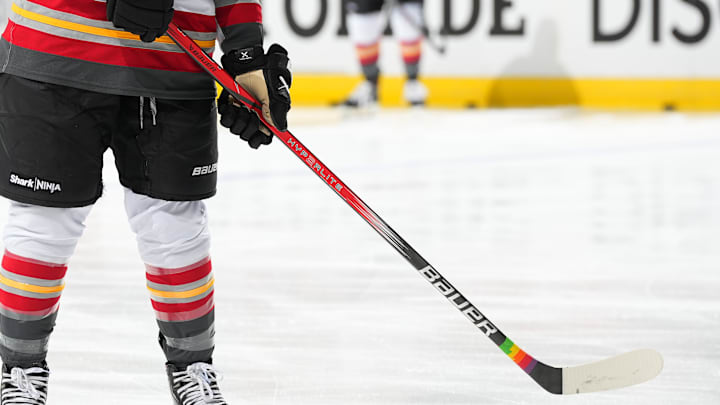Baseball season has started just as hockey season is winding down. Even with Alex Ovechkin now within the amount of goals you can count on one hand of Wayne Gretzky’s goal scoring record, the biggest sports news of the weekend seemed to be torpedo bats and how some New York Yankees are using them.
To oversimplify the news for people who don’t watch our great American pastime its a special model of bat that’s wider where the ball hits the bat to aid the player. These bats have been noticeably used to start the season. Before anyone asks, or more likely complains, yes the bat is completely legal according to MLB’s rules.
Because we’re always thinking hockey, what if there was an NHL equivalent?
What if the great analytic and equipment minds of the NHL came together and came up with a “torpedo stick” to help players score at a higher rate. Is it even possible and is it even legal in the rules?
Let’s assume a “torpedo stick” would involve making the blade of the stick wider to increase contact with the puck the same way the “torpedo bats” increase the width of the barrel of the bat to increase contact with the ball. We took a look at both the USA Hockey rule book as well as the official NHL rule book. Both are consistent with how thick a stick blade can be with both saying it must be between two to three inches.
Goalie stick obviously fall under a different set of rules. Anything over the three inches is forbidden, but there is nothing saying the width can’t differ in the middle of the stick. For example, the toe and heel of the blade could theoretically be towards the lower end of the two to three inch measurement while the middle of the stick maxes out at that three-inch mark.
Now that we determined legality, let’s talk practicality. Having that wider middle part of stick blade could help players not whiff on one timers and help bad pucks out of mid-air. What if the wider middle part of the blade means the heel and tip of the still are thinner now?
A hockey player makes more use of the heel and tip of his stick more than a baseball player makes use of the end of their bat. A hockey player uses their blade to make contact with the puck at all places. Sticking to a “sweet spot” like baseball players with the barrel of their baseball bat doesn’t necessarily translate to shooting pucks.
While the internet debated on the torpedo bats it did remind us a little of hockey stick curvatures
The NHL has specific rules on what constitutes a “legal” curve and failure to comply can result in a penalty. The most famous example was with Martin McSorley in the 1993 Stanley Cup Final. The Gretzky-led Kings held a 1-0 series lead, but the eventual champion Montreal Canadiens won Game 2 after tying the score on an illegal stick curve penalty to McSorely. Gretzky years later explained that the illegal curvature was noticeable.
Let’s continue with our hypothetical scenario on if the NHL should allow or crack down on the “torpedo stick”, if it were to exist. Most NHL rule and equipment changes lean toward increasing scoring in the game.
This is especially true of the post 2004-2005 lockout era. A few years ago when we interviewed former New York Islanders goalie Rick DiPietro about how the NHL cracks down on goalie equipment he responded that if they feel the need to crack down on it goalies “must be doing something right”. If this new stick advancement puts more pucks in the back of the nets and players like it, why would the NHL want to stop their players from using it?
